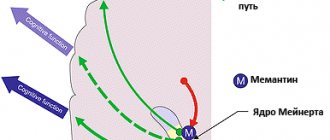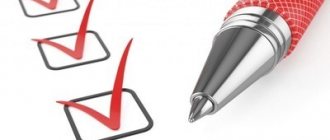What is hyperhidrosis
A person has 2 types of sweat glands, which differ in their functions and regulatory mechanisms:
- Apocrine glands - most of them are located in the armpits and around the external genitalia, regulated by the sympathetic nervous system, adrenergic fibers, where the main substance is adrenaline. They begin to function in adolescence, produce a secretion with pheromones - an individual smell; under stress, the function increases, but they do not participate in thermoregulation.
- Eccrine glands - the largest number - are located in the armpits, on the feet and palms, and secrete the liquid part of sweat. The main regulator of the function is acetylcholine. The glands are involved in thermoregulation and sweating during stress.
The work of the vegetative unequal system, which controls the sweat glands, is not controlled by consciousness. Therefore, it is impossible to cause increased sweating on your own; it increases in response to an increase in body temperature during illness, in hot weather or after physical activity. Sweating increases with excitement, emotional stress, which leads to the release of adrenaline.
But the condition of hyperhidrosis is different from normal sweat production. The glands work actively when a person is calm and does not overheat. This is often associated with various pathologies. There is diffuse hyperhidrosis, in which sweating increases throughout the body. The disease is often associated with pathology of the nervous system. Local, or focal hyperhidrosis, affects only one area of the body. This form is more common than others.
Sweating may be seasonal and occur only in the hot season, but for most people with pathology it does not depend on the season.
Treatment of hyperhidrosis with folk remedies
Boric acid - disinfection + healing
This cheap product is sold in pharmacies without a prescription. It has a wide spectrum of action:
- helps with armpit sweating
- disinfects
- quickly heals wounds.
The drug is available in the form of powder, ointment or liquid.
Hydrogen peroxide - antiseptic + “drying”
Hydrogen peroxide kills germs and dries wet skin. In the fight against hyperhidrosis, a 3% solution is best suited. Dilute peroxide in 200-250 ml of warm water in a ratio of 1:10 and saturate a napkin with the solution. Repeat the procedure no more than 2 times a day.
Soda - acid-base balance (pH)
Soda normalizes the functioning of the sweat glands and the pH of the epidermis. Dissolve a tablespoon of baking soda in a glass of warm water. Then soak a napkin or gauze swab with this liquid and treat the skin in the problem area.
Potassium permanganate - narrowing pores + eliminating odor
Potassium permanganate is a cheap, affordable remedy that can easily eliminate phlegm in the armpits. Manganese also neutralizes unpleasant odors and narrows sweat channels. Potassium permanganate is diluted in warm boiled water until it turns slightly pink. Rub the skin with this liquid 3-4 times a day.
Apple cider vinegar for sweat and foot odor
Natural 5-6% apple cider vinegar contains vitamins, acids and beneficial microelements. It normalizes sweating and tones the skin. Prepare a foot bath: mix 200 ml of vinegar and 4-5 liters of water in a basin, then soak your feet in the solution for 15-20 minutes. Carry out this procedure 1-2 times a week.
Tar soap - dries and disinfects
Tar soap is sold in any cosmetic store. When fighting hyperhidrosis, simply replace your toilet soap with tar soap and wash problem areas with it morning and evening.
Treatment of hyperhidrosis with herbs - cheap and natural
Herbs that you can buy inexpensively at a pharmacy or collect yourself will help reduce sweating and odor.
- Chamomile is a strong antiseptic and tissue regenerator;
- Sage - against heavy sweating;
- Oak bark - for hyperhidrosis in the armpits;
- Melissa is a source of esters, tannins, caffeic acid
- Sequence - relieves inflammation, tightens pores and reduces sweating;
- Lemon juice - instantly removes odor.
Herbs can be used individually or mixed together. From herbs you can prepare infusions for rubdowns, make foot baths, warm compresses and add to baths with decoctions.
Causes of excessive sweating
Patients most often turn to dermatologists with the primary form of pathology, for which it is impossible to establish the cause. The first symptoms of hyperhidrosis appear during puberty. In girls and boys, this is associated with increased activity of the hormones testosterone and cortisol and immaturity of the nervous system. Daily sweat production becomes strong, activity increases in all types of sweat glands. This is why body odor increases in teenagers.
It is believed that primary hyperhidrosis in 30-50% of patients is associated with hereditary factors. But the first symptoms may appear at the age of 20-30 years. They are provoked by chronic stress, hormonal changes and other reasons. The secondary form of excessive sweating of the armpits is associated with the following conditions:
- excitability and high activity of the autonomic nervous system;
- endocrine pathologies, most often the state of hyperthyroidism, insulin resistance in diabetes mellitus;
- diseases of the cardiovascular system, accompanied by cardiac arrhythmias and rapid heartbeat;
- some types of malignant and benign tumors;
- metabolic disorders and excess body weight;
- overdose or side effects of drugs affecting the autonomic nervous system.
It is not always possible to determine the cause of excessive sweating. But it helps to effectively combat sweating.
How to fix the problem?
No one can predict how and when they will find themselves in such a situation. Emotional stress, which usually causes sweaty palms, can be difficult to control. The problem of wet hands is difficult to solve, but it can be done.
Here are just a few tips that MedExpress Regional Medical Director Timothy Mines gives his patients:
- If you know you're going to have a particularly stressful day, practice deep breathing. Although it sounds simple, taking a deep breath, pausing for a few seconds, and then exhaling can really help release whatever may be bothering you.
- Try applying some antiperspirant to your palms at night. This time of day is the best time to use this product, since at rest the ingredients can be absorbed into the skin without interference and block the sweat glands.
- Place a small bag of baking soda, cornstarch, or baby powder in your purse or briefcase and apply the powder to your palms before a stressful situation. These substances will absorb excess moisture.
Sweaty armpits in women
In the female body, the release of large amounts of sweat depends on hormonal levels. When it changes, the interaction of various parts of the autonomic nervous system changes. This process is most pronounced during menopause.
With a decrease in ovarian function in women, their stimulation by pituitary hormones - follicle-stimulating and luteinizing hormones - increases. But due to physiological characteristics, the release of thyroid-stimulating hormone, which increases blood flow in the thyroid gland, simultaneously increases. Most often this process starts in the evening or at night. It manifests itself in the form of hot flashes - the appearance of a feeling of heat in the upper body and head. The woman begins to sweat heavily. The duration of such an attack is several minutes.
You are more likely to experience heavy sweating if you are overweight. Thermoregulation disorders appear with arterial hypertension. These diseases also often progress after age 50. Hyperhidrosis in this case is secondary. It is not life-threatening, but causes discomfort.
What causes excessive sweating?
Wet palms are an emotional response to feelings such as fear or anxiety.
Sweating is usually controlled by the brain, namely the hypothalamus. This organ somehow processes signals about emotions and responds to them with increased sweat production.
Any situation that may cause nervousness or agitation can be accompanied by "stress sweating." It could be public speaking, a first date, a social activity, or a sudden panic over a missed deadline.
Doctors also point out that certain foods, such as spicy foods, red meat, as well as smoking and drinking alcohol and caffeine, can also play a role as a catalyst for sweaty hands.
How to properly place a rug in a room depends on the furniture: tips from a stylist
It was an ideal night for Fata Morgana: why didn’t they notice the iceberg on the Titanic?
iPhone owners were advised to urgently update iOS due to a vulnerability
Underarm sweating in men
The functioning of the male body is regulated by the hormone testosterone. It performs an anabolic function and accelerates metabolism. Sensitivity to adrenaline is also higher in men. Therefore, small bursts of this hormone speed up the heart rate, increase reaction speed and lead to sweaty armpits.
A man may sweat more than usual if he prefers hot and spicy foods. Sweating of the armpits and the entire body greatly increases when drinking alcoholic beverages. In this case, hyperhidrosis is associated with metabolic processes, as the body removes toxic substances after recycling ethanol. Nicotine has a direct stimulating effect. It increases the synthesis of acetylcholine, which enhances the work of the sweat glands. Therefore, sweating is a natural phenomenon in men who smoke.
Sweating occurs when there is severe nervous tension. Men's jobs are more likely than women's to involve stress or hazardous activities.
Men are susceptible to developing obesity, metabolic disorders and hypertension. Those at risk are those who lead a sedentary lifestyle and have a large waist circumference at the age of 45-50. These disorders affect the tone of the sympathetic nervous system and sweating.
Reusable sweat-absorbent products: top, bodice and inserts
There are reusable anti-sweat products. They protect clothes from stains and streaks for 24 hours, after which they are washed in warm water. These products can last for more than one year.
- A top with sweat protection zones is worn on the body instead of underwear or together with it. Its coverage area is wider than that of earbuds, as is the area of clothing protection.
- The fabric bodice is worn like a regular bra and fastens in the front, under the bust. And adjustable straps allow you to “tailor” its size to suit you.
- Reusable fabric pads are made of quick-drying, breathable material. They are not attached to clothing, but in the armpit using a silicone adjustable tape.
When to see a doctor
If a person begins to sweat during exercise, hot weather, or extreme excitement, there is no reason to worry. Health problems are indicated by sweating, which occurs against a background of complete calm or is accompanied by additional symptoms.
A slightly elevated body temperature, which is accompanied by night or evening sweats, may be a sign of a chronic infection. Sometimes this is how pulmonary tuberculosis, immune disorders, and the initial stages of cancer manifest themselves.
A dangerous symptom is the appearance of weakness, dizziness, loss of consciousness against the background of increased sweating. This may be a sign of low glucose levels - hypoglycemia. The condition is life-threatening and therefore requires emergency medical attention. Hyperhidrosis is cured only after glucose levels are normalized.
Older women who experience menstrual irregularities and the first symptoms of approaching menopause require special treatment. Without special means, the condition may gradually worsen, and menopause will be difficult.
Increased sweating is one of the signs of thyrotoxicosis. This disease is accompanied by an increase in thyroid function and the release of increased doses of hormones into the blood. At the same time, the heartbeat increases, heart rhythm disturbances appear, and the person quickly loses body weight, despite maintaining the nature of the diet.
When this is no longer the norm: symptoms of hyperhidrosis
Hyperhidrosis begins to manifest itself gradually: at first, sweating is very scanty, almost imperceptible, then you notice small wet spots on your clothes, and finally, sweat begins to pour out “like a bucket.” In this case, the disease is often accompanied by other symptoms:
- Swelling of the arms, legs and face
- Cardiopalmus
- Soft tissue pain
- Redness and irritation of the skin
- Chills due to continuous evaporation of fluid from the skin
These symptoms can be aggravated by stress, expression of strong emotions, summer heat, as well as consumption of chocolate and coffee.










